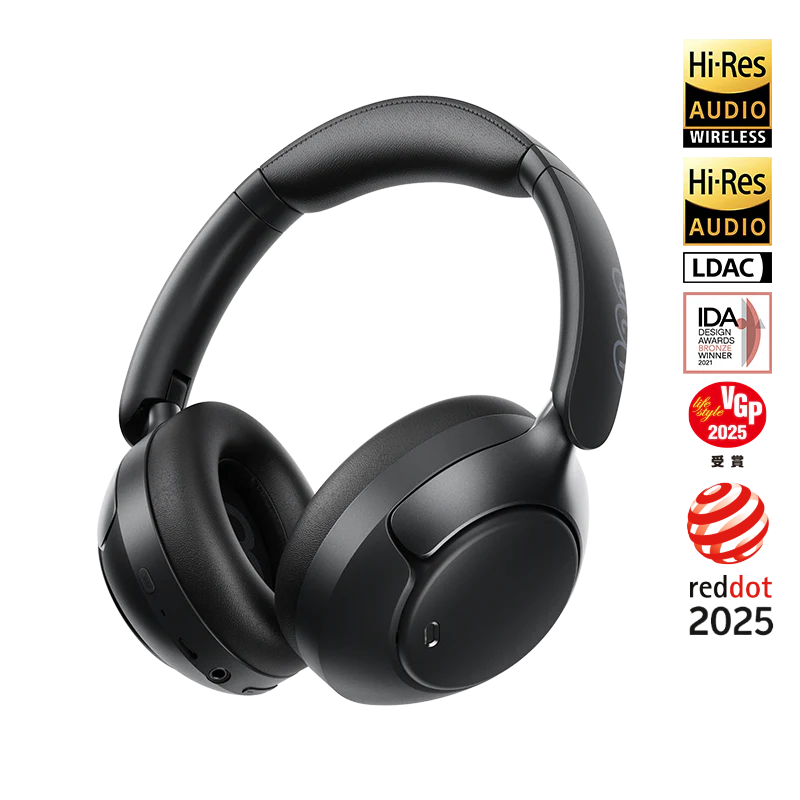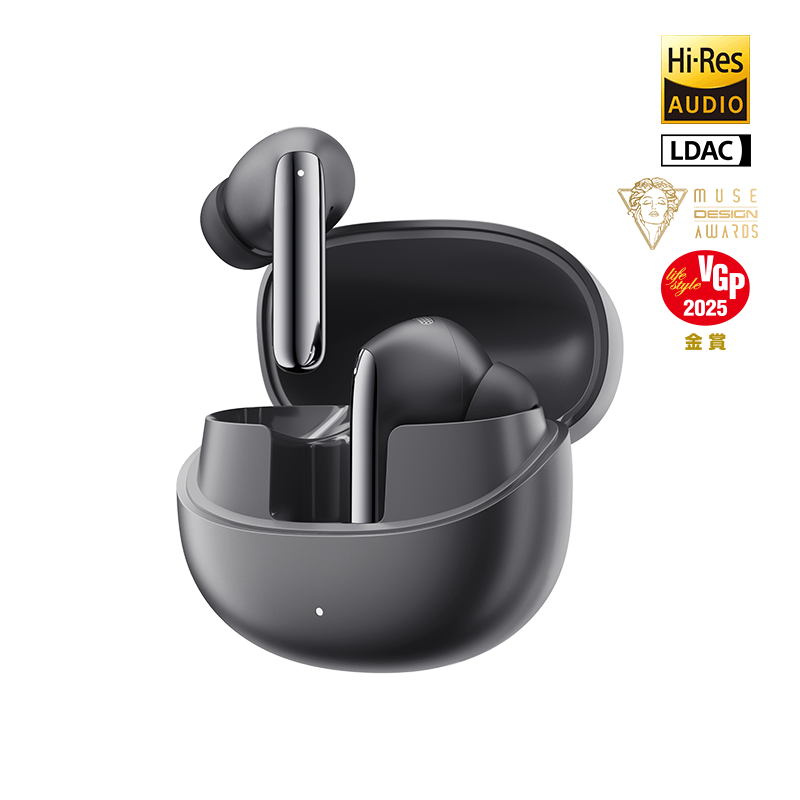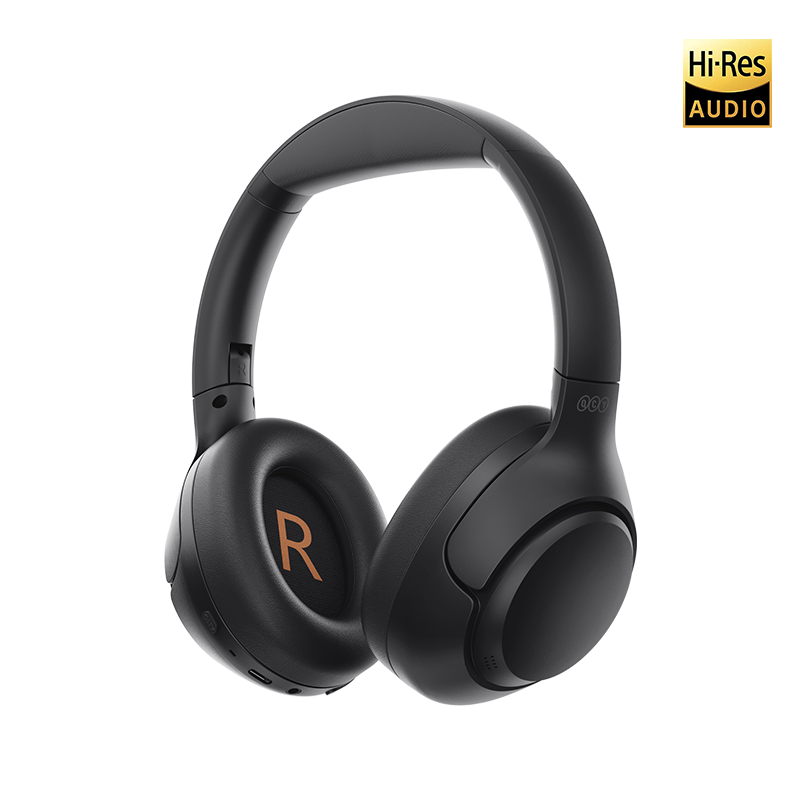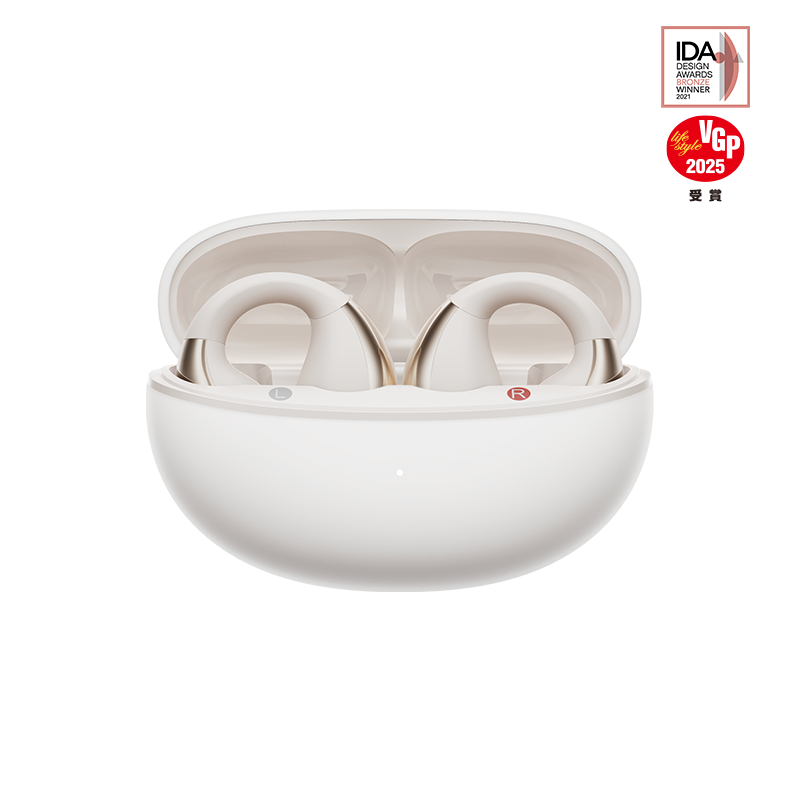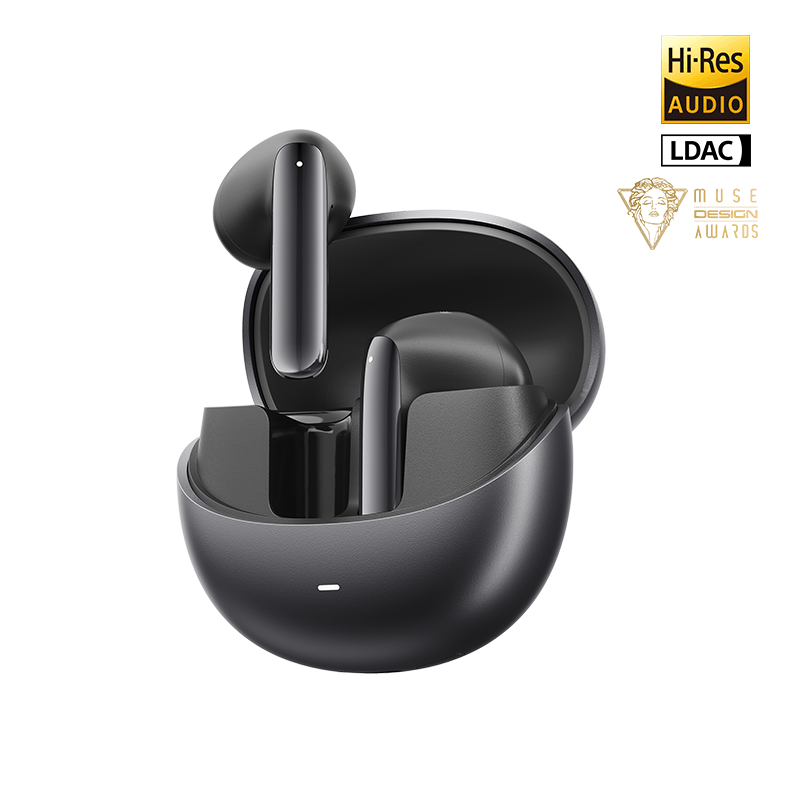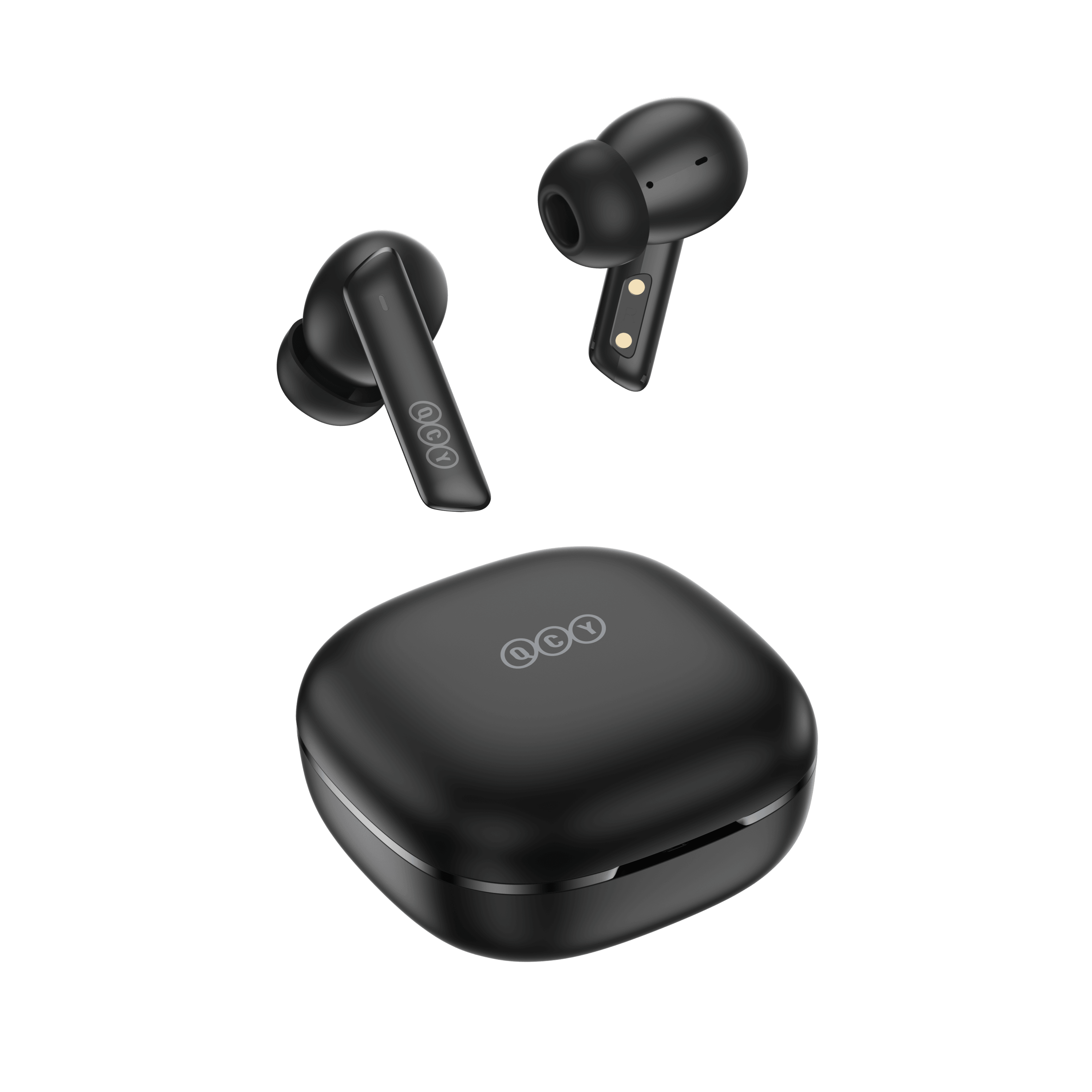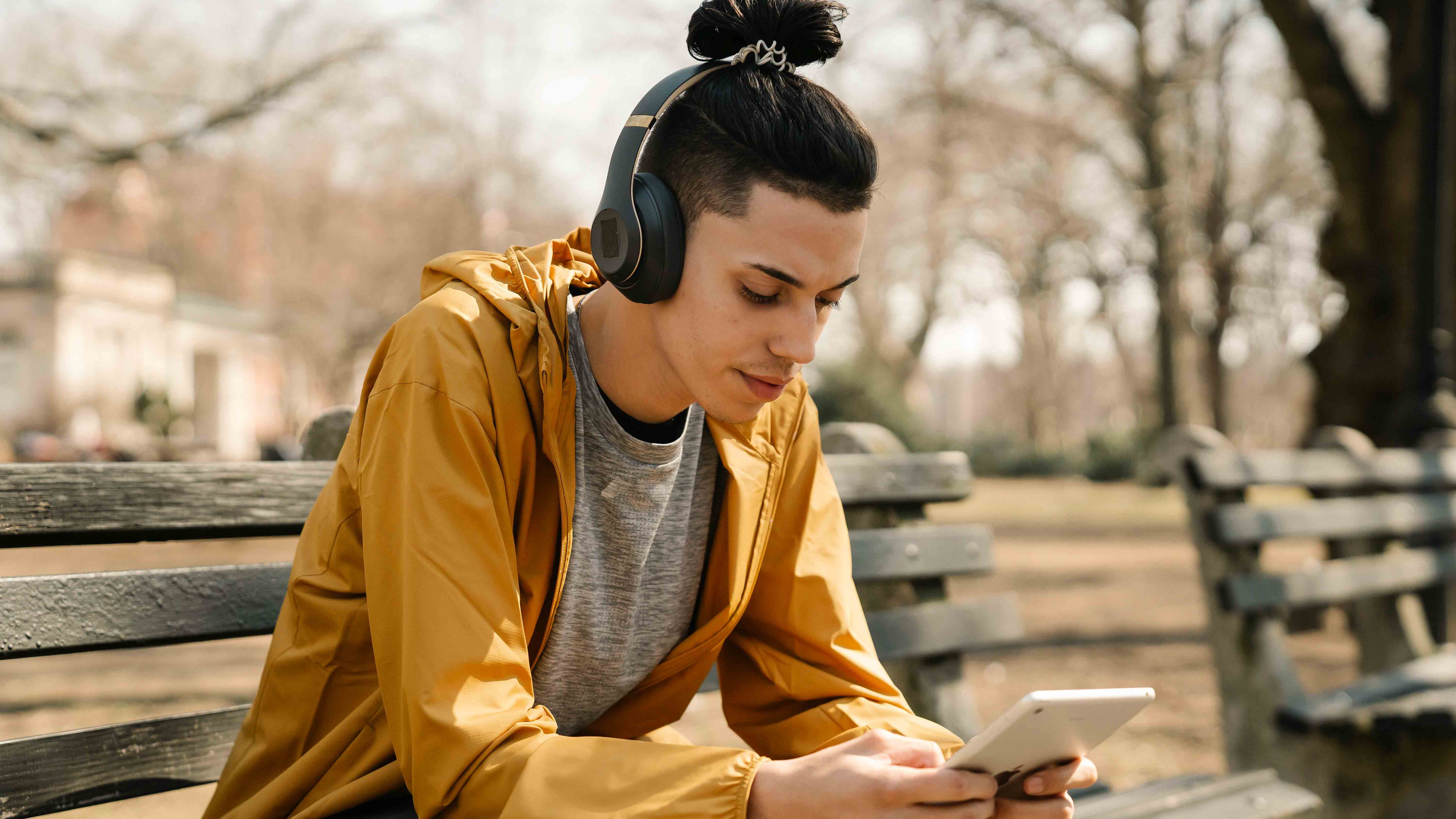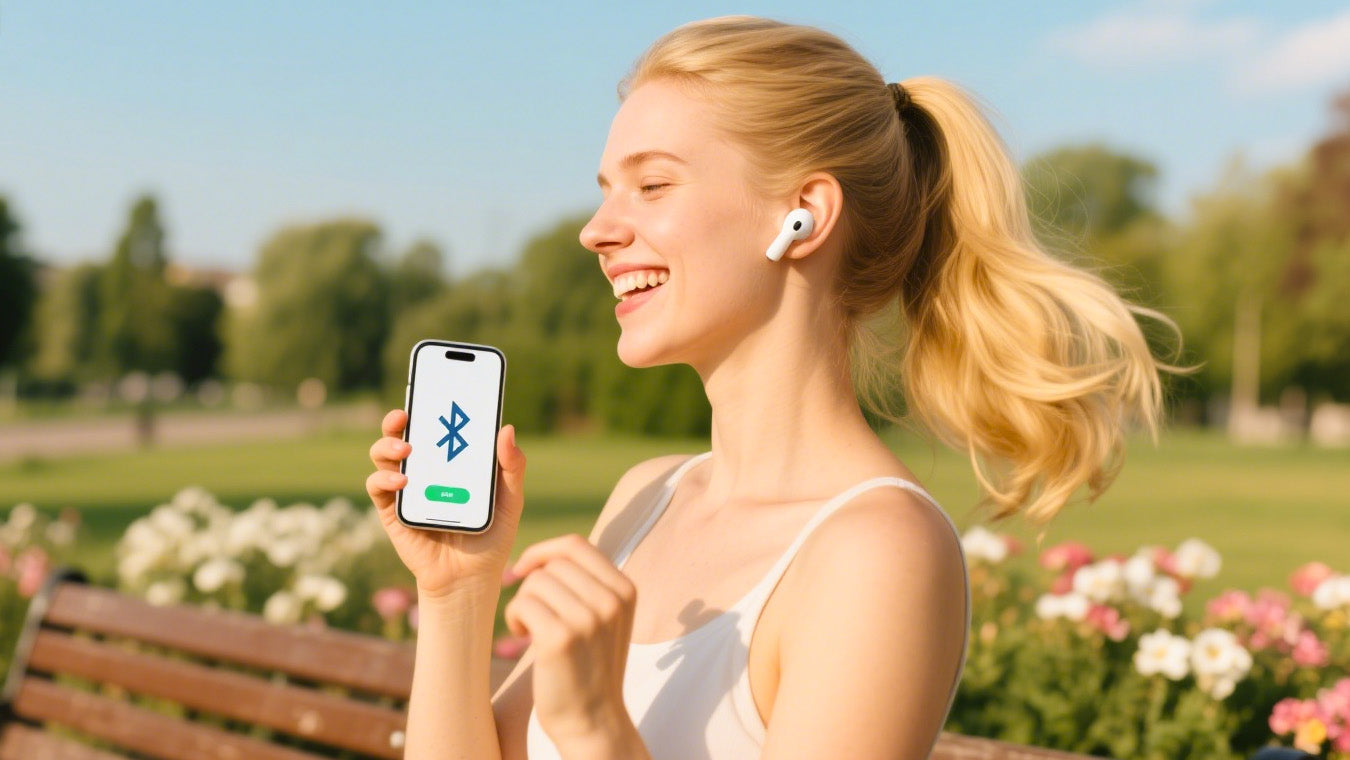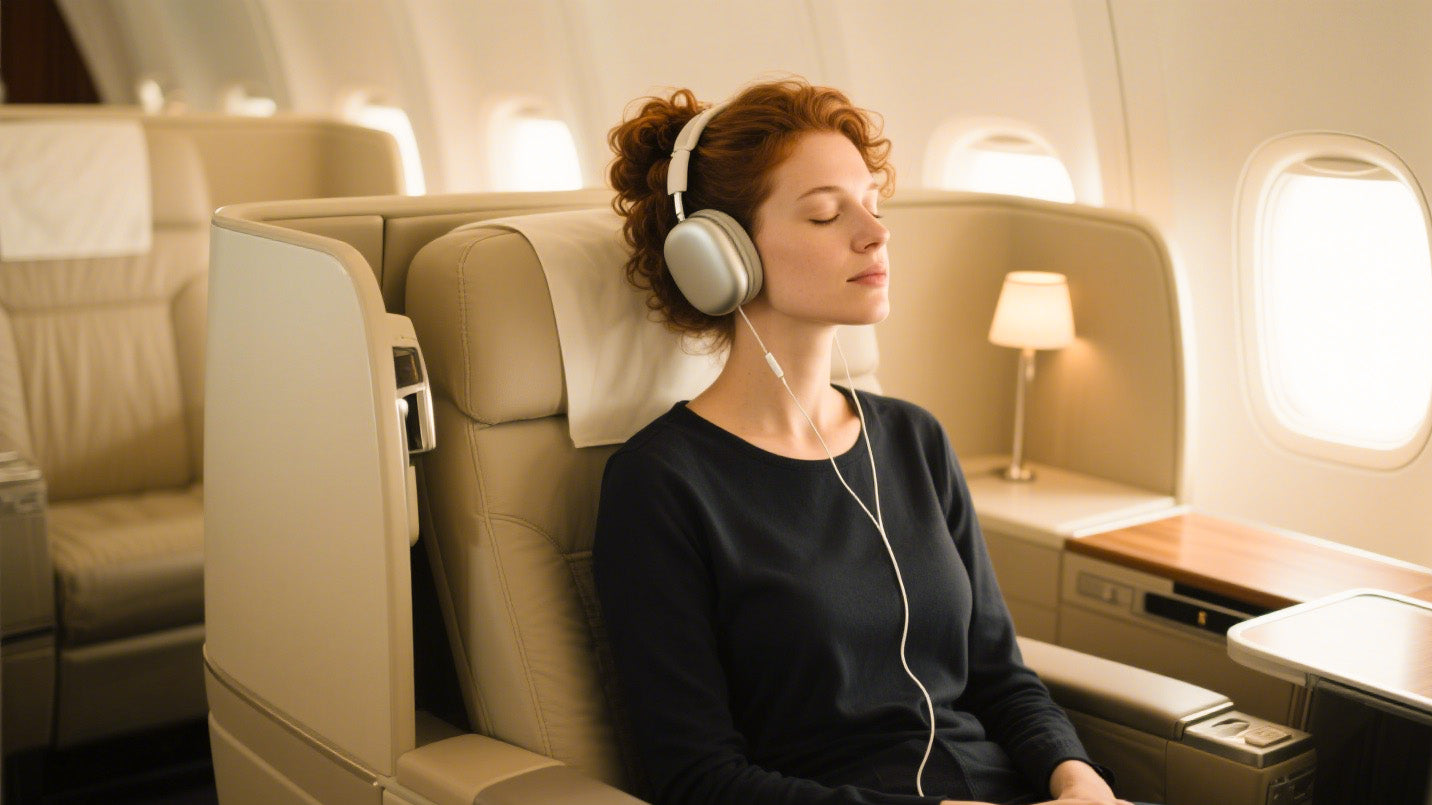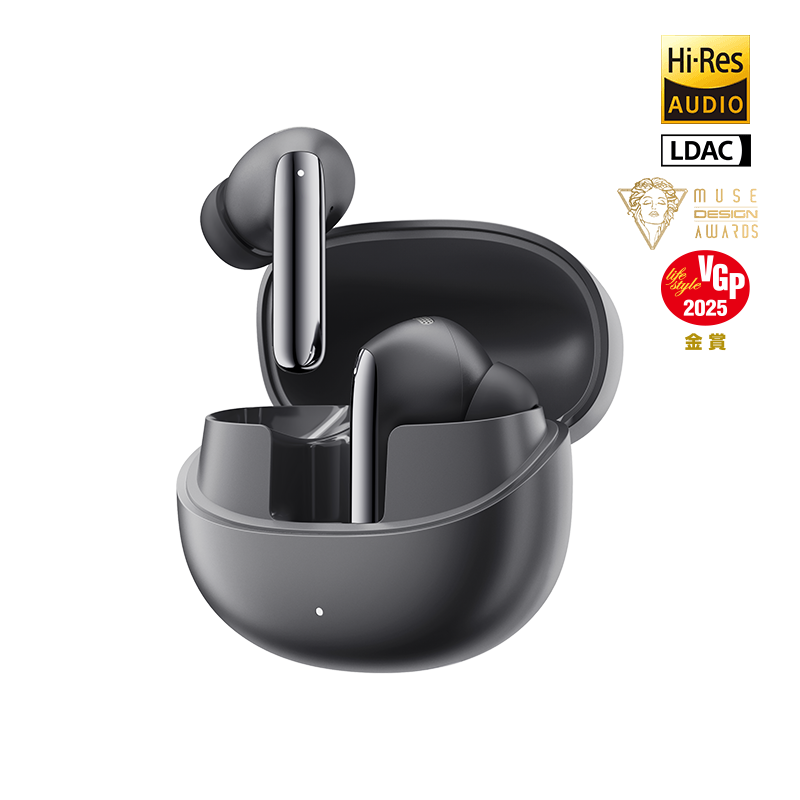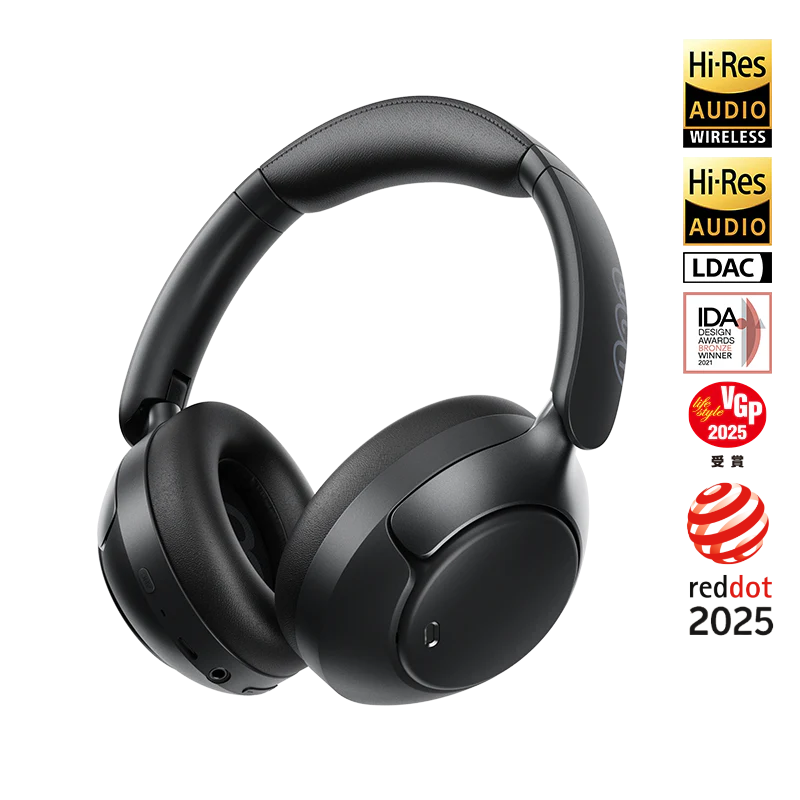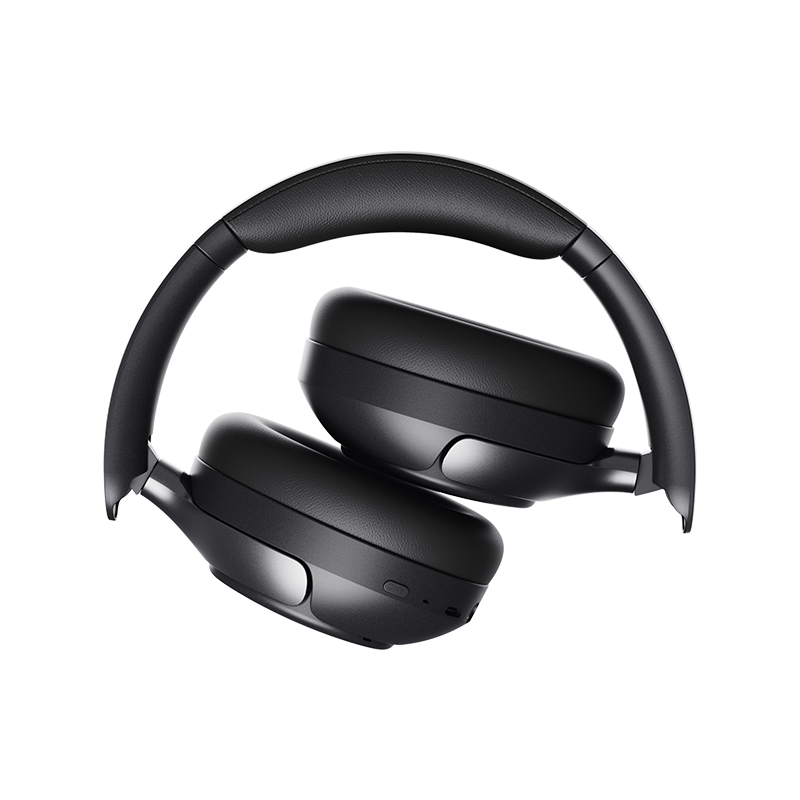
Wireless headphones have revolutionized how we experience audio, offering freedom from cords and seamless connectivity for music, calls, gaming, and more. With Bluetooth technology advancing and a variety of designs available, choosing the right pair can feel overwhelming. This 1500-word guide explores the main types of wireless headphones—in-ear, open-ear, on-ear, over-ear, and bone conduction—detailing their features, use cases, and pros and cons. We’ll also recommend two standout models from QCY: the QCY Crossky C50 (open-ear) and QCY H3 Pro (over-ear), both offering premium features at budget-friendly prices.
Understanding Wireless Headphones
Wireless headphones transmit audio using technologies like Bluetooth, radio frequency (RF), or infrared, with Bluetooth being the most prevalent due to its compatibility with smartphones, tablets, and laptops. These headphones vary in design, sound quality, comfort, and features like active noise cancellation (ANC), catering to diverse needs from casual listening to professional use. Understanding the types helps you select the best pair for your lifestyle and budget.
Types of Wireless Headphones
Wireless headphones are categorized by their design and how they interact with the ear. The five main types are in-ear, Semi-in-ear, open-ear, on-ear, over-ear, and bone conduction headphones. Each offers unique benefits and trade-offs.
1. In-Ear Wireless Headphones
In-ear headphones, often called earbuds or true wireless earbuds, fit snugly inside the ear canal or rest just outside it. They’re compact, portable, and popular for active lifestyles.
Features
- Design: Small earpieces, often with a charging case for true wireless models (no wires between earbuds).
- Sound Isolation: Provide passive noise isolation due to their tight fit, with some models offering ANC.
- Battery Life: Typically 4–8 hours per charge, with cases extending total playtime to 20–30 hours.
- Connectivity: Bluetooth 5.0 or higher for stable, low-latency connections.
- Use Cases: Exercise, commuting, casual listening, and hands-free calls.
Pros
- Highly portable and discreet.
- Comfortable for long-term wear with the right fit.
- Often sweat- or water-resistant (e.g., IPX4 or higher).
- Budget-friendly options with premium features.
Cons
- Easy to misplace, especially true wireless models.
- Sound quality may not rival larger headphones.
- Shorter battery life compared to over-ear models.
Ideal For
In-ear headphones suit users who prioritize portability and convenience, such as commuters or gym-goers. They’re less ideal for audiophiles seeking top-tier sound quality.
2. Open-Ear Wireless Headphones
Open-ear headphones rest outside the ear canal, delivering sound through air conduction without blocking the ear. They’re designed for situational awareness, allowing users to hear their surroundings.
Features
- Design: Earbuds or clips that sit near the ear canal, often with a hook or band for stability.
- Sound Delivery: Uses air conduction to transmit audio while keeping ears open.
- Battery Life: Typically 6–10 hours, with charging cases for some models.
- Connectivity: Bluetooth 5.0 or higher, often with low-latency modes for gaming or video.
- Use Cases: Outdoor activities like running, cycling, or hiking where environmental awareness is key.
Pros
- Allows users to hear ambient sounds (e.g., traffic, conversations).
- Comfortable for those who dislike in-ear designs.
- Often durable and water-resistant (e.g., IPX5 or higher).
Cons
- Sound quality may be less immersive due to open design.
- Audio leakage can disturb others in quiet settings.
- Bass response is typically weaker than in-ear or over-ear models.
Example: QCY Crossky C50
The QCY Crossky C50 is a prime example of open-ear headphones:
- Open-Ear Design: Rests outside the ear canal, ensuring comfort and awareness of surroundings.
- Air Conduction Technology: Delivers clear audio with 10.8mm drivers, ideal for outdoor use.
- Bluetooth 6.0 + IPX5 Waterproofing: Resists sweat and rain, perfect for workouts or outdoor adventures.
- Battery Life: Up to 7.5 hours per charge, with a charging case for extended use.
- Low-Latency Mode: Enhances gaming and video watching with minimal audio lag.
The QCY Crossky C50 is ideal for runners, cyclists, or anyone needing to stay alert while enjoying music or podcasts.
3. On-Ear Wireless Headphones
On-ear headphones rest on the outer ear, offering a balance between portability and sound quality. They’re less bulky than over-ear models but provide better audio than most earbuds.
Features
- Design: Compact earpads on the ears, often foldable for travel.
- Sound Quality: Larger drivers (e.g., 30–40mm) deliver better bass and clarity than in-ear models.
- Battery Life: Typically 15–25 hours, depending on ANC usage.
- Comfort: Lightweight but may cause ear fatigue over time.
- Use Cases: Casual listening, short commutes, and light office work.
Pros
- More portable than over-ear headphones.
- Decent sound quality for the price.
- Often include microphones for calls and virtual meetings.
Cons
- Limited noise isolation compared to in-ear or over-ear models.
- Can cause discomfort during extended use due to ear pressure.
- Sound leakage may be noticeable in quiet environments.
Ideal For
On-ear headphones are great for users who want better audio than earbuds but prefer a compact design. They’re less suited for noisy environments or prolonged listening.
4. Over-Ear Wireless Headphones
Over-ear headphones feature large earpads that fully enclose the ears, delivering immersive sound and excellent noise isolation. They’re favored by audiophiles and travelers.
Features
- Design: Large, cushioned earpads with an adjustable headband.
- Sound Quality: High-fidelity audio with deep bass and clear highs due to large drivers (e.g., 40mm+).
- Noise Cancellation: Many include ANC for blocking ambient noise.
- Battery Life: 20–40 hours, often with fast-charging options.
- Use Cases: Travel (e.g., flights), gaming, home listening, and professional audio work.
Pros
- Superior sound quality and immersion.
- Excellent noise isolation, especially with ANC.
- Comfortable for long-term wear with padded earcups.
Cons
- Bulkier and less portable.
- Higher price points for premium models.
- Can feel warm or heavy during extended use.
Example: QCY H3 Pro
The QCY H3 Pro is a standout over-ear option:
- Advanced ANC: Reduces noise by up to 50dB, ideal for planes or busy offices.
- Hi-Res Audio: Supports high-resolution audio for detailed sound.
- Long Battery Life: Up to 55 hours (ANC off) with fast charging.
- Comfort Design: Soft ear cushions and lightweight build for extended wear.
- Versatile Connectivity: Bluetooth 5.4 and wired mode for flexibility.
The QCY H3 Pro is perfect for audiophiles, travelers, or remote workers seeking premium features on a budget.
5. Bone Conduction Wireless Headphones
Bone conduction headphones transmit sound through vibrations on the cheekbones, bypassing the ear canal. They’re ideal for users who need to stay aware of their surroundings.
Features
- Design: Rest above the ears with a band around the head.
- Sound Delivery: Vibrations deliver audio to the inner ear, leaving ears open.
- Battery Life: Typically 6–10 hours.
- Use Cases: Running, cycling, or outdoor activities requiring environmental awareness.
Pros
- Allows hearing ambient sounds for safety.
- Comfortable for those who dislike in-ear designs.
- Often durable and water-resistant.
Cons
- Weaker bass and overall sound quality.
- Vibrations may feel unusual initially.
- Limited use cases compared to other types.
Ideal For
Bone conduction headphones suit athletes or those with hearing impairments who need to balance audio and environmental awareness.
Key Factors When Choosing Wireless Headphones
When selecting a type, consider these factors:
- Sound Quality: Over-ear models like the QCY H3 Pro offer the best audio fidelity, followed by on-ear and in-ear. Open-ear and bone conduction prioritize function over sound.
- Noise Cancellation: ANC is common in over-ear (e.g., QCY H3 Pro) and some in-ear models but rare in open-ear and bone conduction.
- Battery Life: Over-ear headphones last longest, while open-ear models like the QCY Crossky C50 rely on cases for extended use.
- Portability: In-ear and open-ear are most portable, followed by on-ear, with over-ear and bone conduction being bulkier.
- Price: Budget options like QCY deliver premium features affordably.
- Use Case: Match the type to your needs—exercise (open-ear or bone conduction), travel (over-ear), or casual use (in-ear or on-ear).
Why Choose QCY Headphones?
QCY is known for affordable, high-quality audio products. The QCY Crossky C50 and QCY H3 Pro are excellent examples:
- QCY Crossky C50 (https://www.qcy.com/products/qcy-crossky-c50): These open-ear headphones offer air conduction, IPX5 waterproofing, and 7.5 hours of battery life, perfect for runners or cyclists needing situational awareness.
- QCY H3 Pro (https://www.qcy.com/products/qcy-h3-pro): These over-ear headphones provide 50dB ANC, hi-res audio, and 55 hours of battery life, ideal for travel or immersive listening.
Both models support the QCY app for customizing EQ, controls, and ANC, delivering premium performance at budget prices.
Conclusion
Wireless headphones come in five main types—in-ear, open-ear, on-ear, over-ear, and bone conduction—each tailored to specific needs. In-ear models offer portability, open-ear designs like the QCY Crossky C50 (https://www.qcy.com/products/qcy-crossky-c50) prioritize situational awareness, on-ear provides a balance, over-ear models like the QCY H3 Pro (https://www.qcy.com/products/qcy-h3-pro) deliver immersive audio, and bone conduction suits safety-conscious users. By considering sound quality, comfort, and use case, you can find the perfect pair. The QCY Crossky C50 and QCY H3 Pro offer exceptional value, making wireless audio accessible and enjoyable for all.











